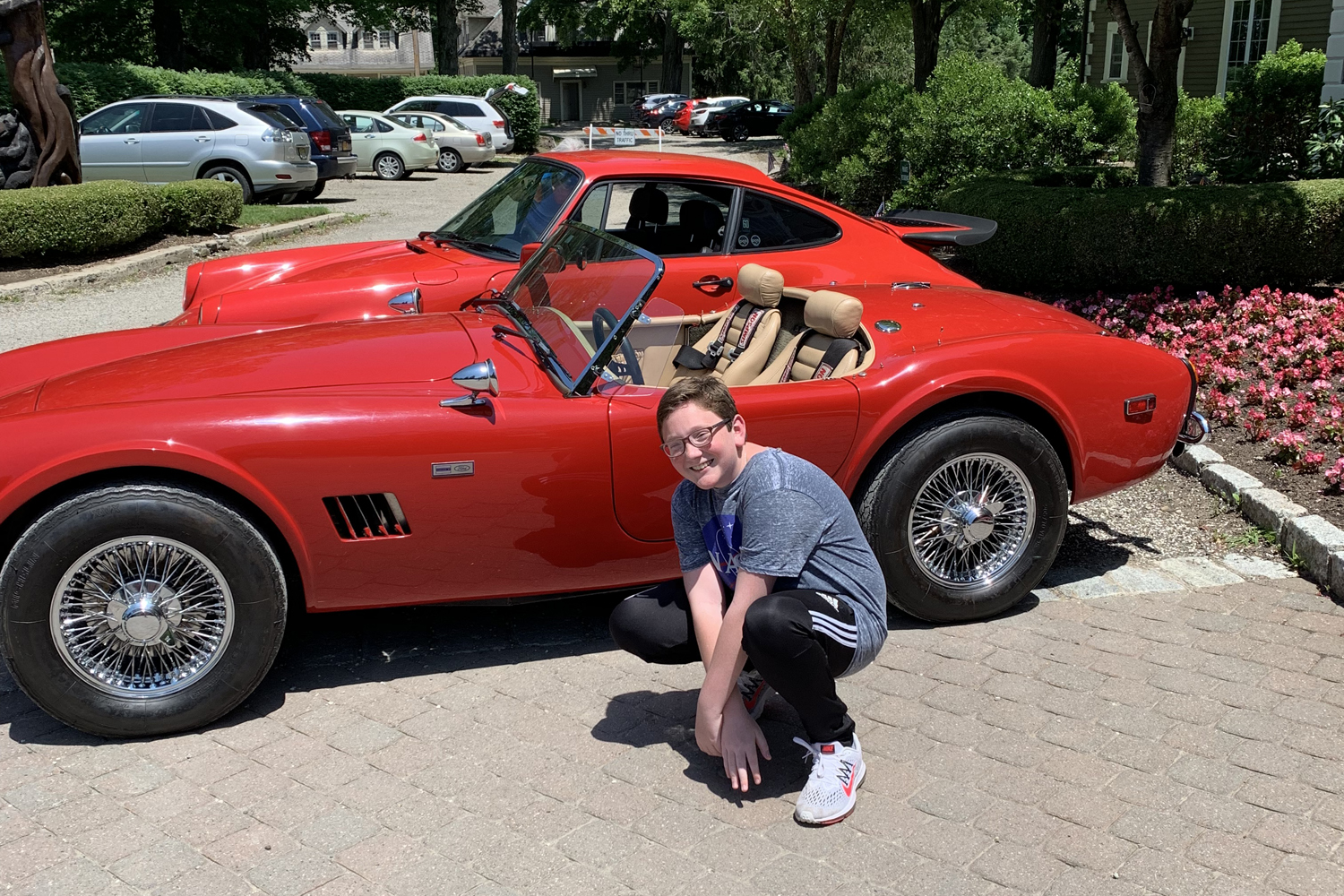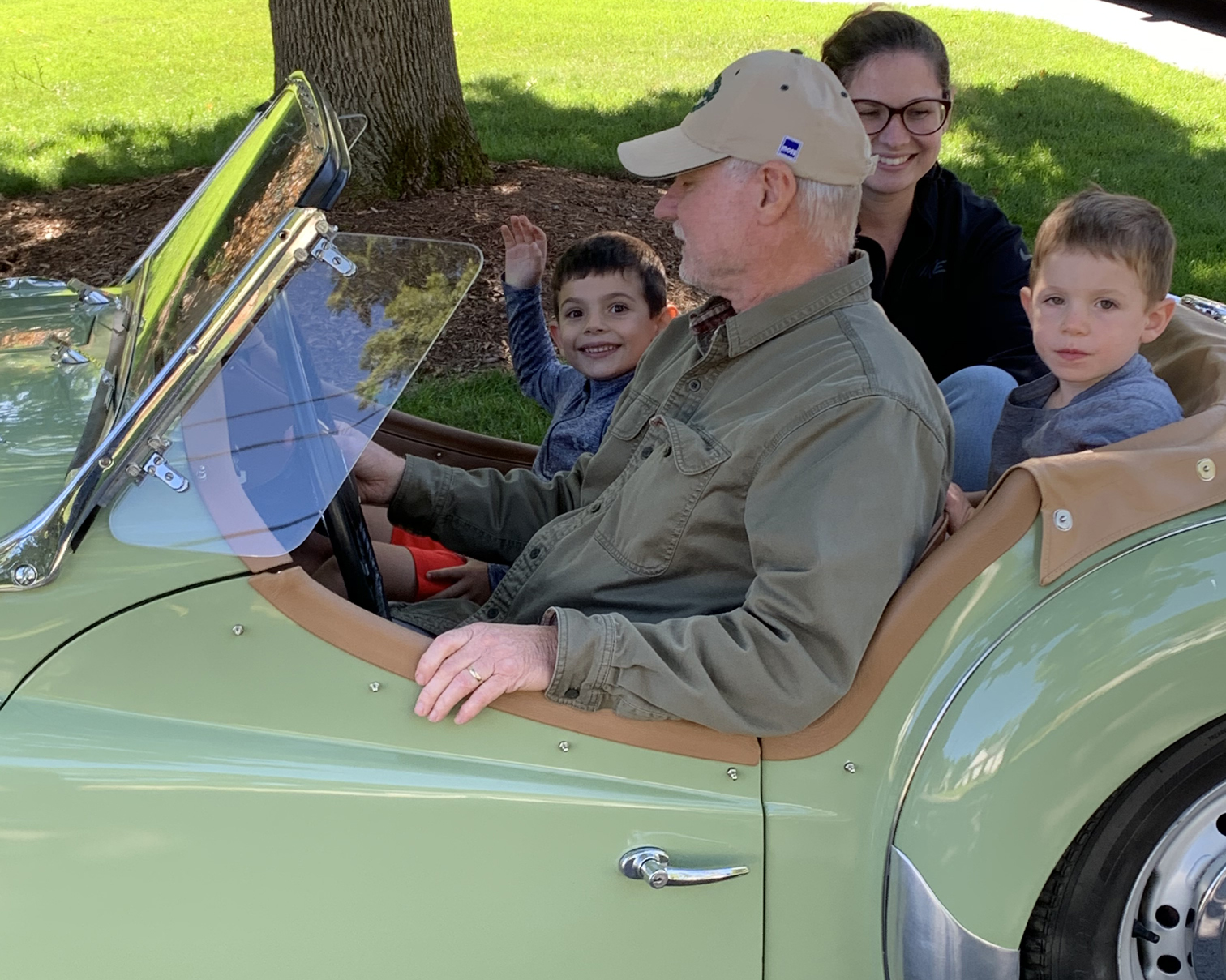I am part of a trio of experienced car enthusiasts that host an adult school class called “Collectible Automobiles as a Passion.” Now, in its twenty-first 9-week semester, it has created an ongoing and expanding community of car enthusiasts for more than a decade. Much like a pebble tossed in a pond, I have found its impact ripples far beyond its own existence.
It has attracted an extraordinary and thoughtful group of men and women of all stripes united in their shared fervor as automobile enthusiasts. Over the life of the class and for the broad spectrum of its many and varied participants one concern has risen above all others. This year the expression of that concern by the class has reached a crescendo that has given birth to a call for action. The concern? As the current population of automobile enthusiasts approach a time when they will begin to age out, to whom will they hand the reins? Who will continue the preservation and promotion of the art, culture, history and joy of the classic automobile? The obvious answer lies with the coming generations. At the heart of the expressed concern resides the fear that today’s youth have not been exposed to the experiences and attributes of classic automobile enthusiasm that fired our generation’s passion. Our class in some small way wanted to do something to address this disconnect. I have an idea for my class to consider. The idea is the:
“Collectible Car Fair for Kids and Teens.”
Collectible Car Fair for Kids & Teens

December 12th of 2009 saw the museum celebrating the once fabulously famous cowboy, Roy Rogers, close its doors for the last time. The museum shuttered for lack of enough fans to support it. So it was the end of the trail for “Happy Trails to you.” At a Christie’s auction Nellybelle, Roy’s 1946 Willys Jeep sold for $116,500. Trigger, Roy’s stuffed Golden Palomino stallion, went for $266,500. What could all this possibly have to do with today’s comfortable world of car enthusiasts’ multi-billion dollar passionate pursuit? The answer, plenty.

It serves as a cautionary tale deeply unsettling for those thoughtful enthusiasts peering across a radicalized cultural landscape populated with a seething hatred for fossil fuels, a governmental love affair with electric cars, futurists cheerleading neutered, self-driving transportation, school systems devoid of any education in technical skills in general and auto shop in particular and the cost of “collectible cars” far exceeding the means of today’s younger generation. Case in point I bought my six year old 1961 Corvette in 1967 for $1,300. Today a six-year old Corvette tips the money scales at around $60,000.
Once unthinkable but, today, many teenagers exhibit little interest in getting a driver’s license. Presently cultural tides offer a powerful array of currents diverting youthful interest away from classic cars. They cannot afford them. They do not drive them. The digital age has no place for printed car brochures. Few local dealerships exist where a kid can walk unchallenged across a showroom floor to admire a car he or she could not afford. A “stick” is something your dog chases.
Keep in mind that the original Concours d’Elegance (French: competition of elegance) came to life in 17th century France. There wealthy members of the French aristocracy paraded their finely crafted and exquisitely turned-out horse-drawn carriages through the Parisian parks on sunny summer weekends for the purpose of display and competitive judging. Today, outside of tourist centers in large cities, how frequently does one encounter a horse-drawn carriage? Indeed, times do change. And change includes the avocations supported by the existing culture.

In today’s world, horse-drawn carriages still compete but rarely if ever in public. Save for the Budweiser Clydesdales, the general public has precious little interest and even less understanding of four-in-hand carriage dressage events. These occur in the cloistered settings of equestrian centers for the well-to-do. Could this be the future that awaits today’s now vibrant collectible car culture? The answer could well be, yes, if viewed in some future society lacking green shoots of interest springing up among those destined to inherit tomorrow. What to do, then, today?
While organizations such as Hagarty have committed significant energy and resources for programs dedicated to cultivating collectible vehicle interest in today’s youth, I believe it is through local grass roots efforts to nurture youthful interest that green shoots will sprout.
I had an idea that brought me to the best source when searching for answers, the local library. There I sought out Dave the Library Director. Dave enjoys a well earned reputation for promoting energetic and creative engagement with the community, especially children. Dave, attentively listened as I pitched my idea for the “Collectible Car Fair for Kids and Teens.
The basis of my proposal called for activities where “Collectible Automobiles as a Passion” (henceforth referred to as the class) members and library staff would interact with the event’s youthful attendees and explore common interests that would be associated with the collectible car hobby.

His interest piqued, Dave listened intently as I described how the plan called for a special opening of his library during the warm weather on a Sunday when the library would normally be closed. Members of the class would populate the library parking lot with a curated array of their personally owned collectible vehicles. Each owner would be prepared to talk about his or her vehicle. Each owner would have a comprehensive knowledge of their car and, as well, would be conversant about the time period when their car was new to provide an historical perspective. Cars would be arrayed in a manner that offered easy access for children wishing to sit inside and have a parent or friend take a picture.
The class membership reflects a wide variety of professional pursuits including law enforcement, medicine, advertising, automotive technology, finance, education, automotive marketing and promotion, and many more. As well, they possess significant experience in the collectible vehicle hobby with interests including car collecting, racing, concours judging, hands-on restoration experience, art, journalism and collectible car sales. Many members have first-hand experience dealing with giants of the 20th century automotive world such as Carroll Shelby, Donald Healey, Nuccio Bertone, Bob Lutz, Brian Redman, Derek Bell, Nicola Bulgari and Dr. Fred Simeone to name a few.
The following suggestion stirred Dave’s creative juices as I suggested that the event would integrate library activities available to all children. This would include promoting a summer reading program that among other titles would feature books with automotive themes including art, history, driving, racing and travel. Dave commented that his library featured a highly developed “Makerspace” program, it could offer “maker” activities consistent with the event’s automotive theme. I had a good feeling that I might be sensing “buy in” from Dave.

Children interested in learning how to judge a car show could pre-register for a “how to judge” class (Possibly 2 groups broken down by age, 8 to 12 and 13 to 17). They would receive instruction before the event from class members who have judged at national events such as Amelia Concours d’Elegance and the Greenwich Concours d’Elegance. Children completing the training would then judge the cars at the event. All children participating as judges would receive a certificate of recognition.
Children attending the event who exhibit an interest in art and design could sketch any car they wished or create a design of their own. An effort could be made to publish the winner’s(s’) artwork in the local newspaper. Professional automotive artists have been class members over the years and we would seek to have them speak with students sharing their professional insights. Children with a flair for photography could have the opportunity to attend a library event featuring instruction from an experienced automotive photographer. The session could provide guidance on how to take a better photograph of a friend when seated in one of the cars on display whether using a camera or a phone. Dave smiled.

As class membership includes female car enthusiasts, a special effort would be made to address opportunities in the collectible automobile arena for women as well as men.
One of the younger class members recently earned a 4-year degree in automotive restoration technology from McPherson College, the only college in America offering a degree in Automotive Restoration. He possesses a wealth of information and experience to share with any child interested in pursuing a degreed program.
A final feature, if allowable, would provide for a lottery with five winning tickets drawn. The winning youngsters would then get a ride in the collectible car of their choice.
As an extension of the event, if the local high school expressed interest, our class could use our relationships with institutions such as the NB Center for American Automotive Heritage in Allentown, PA or the Simeone Foundation Museum in Philadelphia, PA on a “Demo Day” when selected display cars come outside for driving demonstrations.

In describing the automobile, world renowned neurosurgeon, car collector and founder of the internationally revered Simeone Foundation Automotive Museum called the automobile, “the greatest gift of the Industrial age.” The automobile’s dynamic, ever changing story fills volumes with accounts of people and events replete with a relentless, no holds barred battle for performance supremacy and market advantage, breathtaking adventure, stunning design, breakthroughs that stand out in the telling of human history, personal tragedy and triumph, and a central role in war, wealth and global financial over the past 150 years. Stories rich with personal drama and historic significance await the children who will attend the Collectible Car Fair.
With the pitch completed, the focus turned to Library Director Dave. “What say you,” I asked.
Dave responded with an enthusiastic “Yes!”
Now, I will return to class bearing an idea that hopefully will be accepted as worthy of the labor necessary to plow a field that will yield green shoots.


Well done! Great idea!
Thank you. Some familiar Volvo names will be involved.
Excellent idea and you have a number of involvement bases covered. I know AACA Museum hosts drive a classic car events. I would add a component where the kids and teens are riding shotgun (driving if licensed) and out on the road (wind in hair a must)! Its all about making the senses come together … scent, touch sound etc. Keep us all posted!
Thank you for your comments. have taken the early steps forward.
Brilliant concept and noble work!
Moving ahead. The adventure begins.